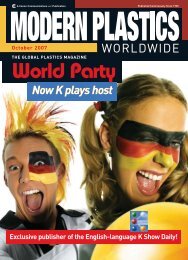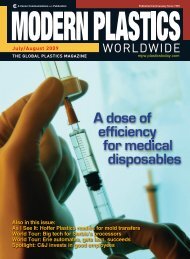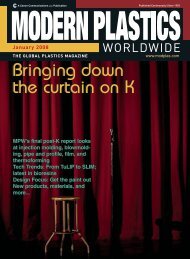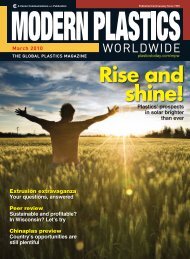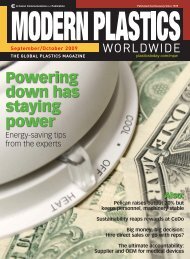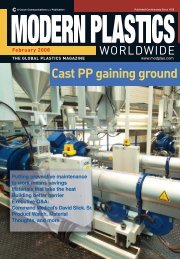amidiq - dae uptlax
amidiq - dae uptlax
amidiq - dae uptlax
You also want an ePaper? Increase the reach of your titles
YUMPU automatically turns print PDFs into web optimized ePapers that Google loves.
J. L. Arredondo-Figueroa et al./ Revista Mexicana de Ingeniería Química Vol. 6, No. 3 (2007) 301-308<br />
(89, 156 and 194 kg) with two replicates in six 4.3<br />
m 3 self-cleaning circular tanks. Volume and daily<br />
water turnover in each part of the system is shown in<br />
Table 1. Air was supplied to the recirculating-water<br />
system by means of a high-volume blower of 10 HP.<br />
Table 1. Volume and daily water turnover, in the<br />
different parts of the recirculating-water system<br />
utilized in this experiment.<br />
Parts Volume<br />
(m 3 Average turnover<br />
) water per day<br />
Fish tanks (FT) 24.0* 3.94<br />
Settling tank (ST) 2.64 4.19<br />
Biofilter I (BI) 3.20 2.84<br />
Biofilter II (BII) 5.80 1.62<br />
Reconditioning tank 4.80 1.80<br />
* Six fish tanks of 4.0 m 3 .<br />
Three hundred seventy one “kamloop”<br />
rainbow trout, 524 ± 9 g initial wet weight<br />
previously conditioned during 15 days were placed at<br />
random into the tanks. A total study time of 44 days<br />
was divided into three phases: 14, 17 and 13 days.<br />
Load rates were fixed at 194, 156 and 89 kg with<br />
respect to phase duration, the number of fishes for<br />
each load densities were 371, 261 and 129<br />
respectively.<br />
A commercial 38% protein trout feed was<br />
used (Almazan Silver Cup, Toluca, Mexico) at 2%<br />
rate of fish body weight. Fishes were fed twice a day<br />
with equal portions.<br />
Variable measured every 24 hours were: water<br />
temperature; dissolved oxygen using a dissolved<br />
oxygen-temperature meter (YSI model 57, Yellow<br />
Springs Instruments, Ohio, USA); pH with a pH<br />
meter (Beckman 50, Fullerton, CA, USA); total<br />
ammonia nitrogen (TAN), nitrite and nitrate were<br />
also measured daily with a Hach kit model DR/2000<br />
(Hach Chemical Company, Ames, Iowa, USA).<br />
Water samples were taken at four sites in the<br />
closed recirculating-water system: Fish tanks (FT);<br />
Settling tank (ST); Biofilter I tank (B I) and<br />
reconditioning tank (RT) (Fig. 1). Non-ionized<br />
ammonia fraction was calculated using the method<br />
and tables reported by Emerson et al. (1975) (Fig. 1).<br />
The experiment consisted in a completely<br />
randomized design, with three treatments (load rates)<br />
and two replicates. Data obtained were analysed for<br />
analysis of variance and Turkey’s test for unequal<br />
populations by Statistica package, version 4.5<br />
(Statsoft Inc., Tulsa, USA).<br />
Fig. 1. Flow diagram of the recirculating-water<br />
system, utilized in this study. Not scale. The sampled<br />
sites were: FT, ST, BI and RT.<br />
3. Results<br />
Survival rate was 100% and no adverse effects<br />
on growth rate of rainbow trout were detected as<br />
consequence of a bad fish management neither a bad<br />
water quality in the closed system. Table 2 shows the<br />
results of load fish rates, biomass, number of fishes,<br />
average wet weight and amount of feed consumed in<br />
each phase.<br />
The results of the physicochemical parameters<br />
and nitrogenous compounds registered during the<br />
experiment are shown in the Table 3.<br />
4. Discussion<br />
Physicochemical parameters of water and<br />
their fluctuations play a decisive role in treatment<br />
efficiency. Some environmental factors could affect<br />
ammonia and nitrite oxidizers such as substrate,<br />
dissolved oxygen concentration, organic matter,<br />
temperature, pH, alkalinity, salinity, turbulence level,<br />
products inhibition and light intensity (Rijn and<br />
Rivera, 1990; Sato et al., 2000: Chen et al., 2006).<br />
Oxidation of total ammonia nitrogen (TAN) to<br />
nitrate utilizes dissolved oxygen can occur only if<br />
oxygen levels are such that prevent development of<br />
anaerobic conditions (Kruner and Rosenthal, 1987).<br />
In the present study, all factors remained within<br />
ranges that exclude the possibility of nitrite<br />
accumulation.<br />
Table 2. Average load fish rate, number of fishes, total wet weight (± SD)<br />
and feed consumption in the three phases of the study.<br />
Phase and Load rate (kg) Number of Average wet Total feed<br />
duration (days)<br />
fishes weight (g) consumed (kg)<br />
I-14 194 371 524 (± 9) 26.4<br />
II-17 156 261 596 (± 7) 24.6<br />
III-13 89 129 694 (± 8) 14.7<br />
303



